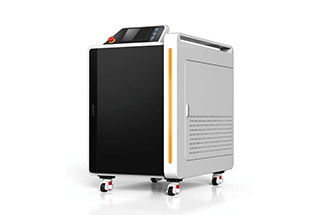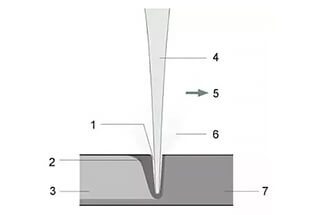
Imagine working with a laser welding machine, where one wrong move could lead to serious injuries or equipment damage. This article covers essential safety precautions for using these powerful devices, detailing steps for safe operation, necessary personal protective equipment, and proper emergency responses. By following these guidelines, you’ll ensure a secure working environment and prevent accidents, safeguarding both personnel and machinery. Dive in to learn the critical safety measures that every operator should know.

Laser welding machines are commonly utilized for butt welding and repair welding of metal materials. The operating principle of laser welding involves using high-energy laser pulses to heat a small area of the material. The heat energy diffuses from the material surface to its interior, creating a specific molten pool after melting. During the entire process, the materials are kept in a high-temperature state.
So, how can we safely operate a laser welding machine?
In case of emergency, such as water leakage or abnormal laser noise, immediately activate the emergency stop button and shut off the power supply. Swift action is critical to prevent potential hazards.
Prior to operating the laser welding machine, ensure the external circulating water system is activated. This is crucial as the laser system employs water cooling, while the laser power supply utilizes air cooling. Operation is strictly prohibited if the cooling system malfunctions, as it could lead to severe damage and safety risks.
Never touch any circuit components during machine operation. The circuitry operates at high voltage with strong currents during laser welding processes. Only certified personnel with proper training should operate this equipment to mitigate electrical hazards.
To prevent ocular damage, direct observation of the laser beam during operation is strictly forbidden. Furthermore, the use of external reflective equipment to redirect the laser beam is prohibited, as it may cause unintended beam paths and potential injuries.
Maintain the integrity of the machine by refraining from disassembling any components or operating with the safety enclosure open. Additionally, never aim the laser head towards any part of the equipment or personnel, as this could result in unintended material damage or personal injury.
To mitigate fire and explosion risks, ensure that no flammable or explosive materials are present within the laser’s operational area, including its beam path and potential reflection zones. Establish and maintain a designated safety perimeter around the laser welding station.

Laser welding machines generate high-intensity, coherent light beams that can pose significant risks if not properly managed. While sharing some characteristics with ordinary light, laser radiation’s concentrated energy and specific wavelengths necessitate stringent safety protocols. The potential biological effects include thermal damage, photochemical reactions, acoustic shockwaves, and electromagnetic interference, which can severely impact human tissues, particularly the eyes, skin, and nervous system.
To ensure the safe operation of laser welding equipment and protect personnel, a comprehensive approach incorporating engineering controls, personal protective equipment (PPE), and robust safety management is essential.
Engineering controls form the primary defense against laser hazards through built-in safety features:
Protective enclosures: Fully enclosed systems with interlocked access panels prevent accidental exposure to direct or reflected laser radiation. These enclosures should be constructed of appropriate materials that can withstand the specific laser wavelength and power.
Safety interlocks: Sophisticated interlock systems automatically deactivate the laser source when access panels are opened, preventing accidental exposure during maintenance or adjustments.
Beam path management: Carefully designed optical paths with beam dumps and absorbers minimize the risk of stray radiation. Reflective surfaces within the work area should be minimized or treated to reduce specular reflections.
Key control systems: Implement multi-level authorization protocols, including removable key switches, to prevent unauthorized operation of the laser system.
Beam terminators and attenuators: High-power beam dumps and variable attenuators ensure safe beam termination and power control, preventing unintended radiation beyond the processing zone.
Emergency stop systems: Easily accessible and clearly marked emergency shutdown buttons should be positioned strategically around the work area.
While engineering controls are the primary safeguard, appropriate PPE is crucial for additional protection:
Laser safety eyewear: Specially designed goggles or face shields with optical density (OD) ratings matched to the specific laser wavelength and power. Regular inspection and replacement of eyewear is essential.
Protective clothing: Fire-resistant and heat-resistant garments that cover exposed skin. Materials should be selected based on the laser type and potential for scattered radiation.
Gloves: Heat-resistant gloves protect hands from both direct and scattered laser radiation, as well as hot workpieces.
Respiratory protection: For processes that may generate harmful fumes or particulates, appropriate respiratory protection should be used in conjunction with adequate ventilation systems.
A comprehensive safety management program is crucial for maintaining a safe laser welding environment:
Laser Safety Officer (LSO): Appoint a qualified LSO responsible for overseeing all aspects of laser safety, including risk assessments, protocol development, and training.
Standard Operating Procedures (SOPs): Develop and enforce detailed SOPs for all laser welding operations, including setup, operation, maintenance, and emergency procedures.
Training and certification: Implement a rigorous training program for all personnel working with or around laser systems. This should include initial certification and regular refresher courses.
Hazard assessments: Conduct regular risk assessments to identify potential hazards and implement appropriate control measures.
Signage and restricted access: Clearly mark laser areas with appropriate warning signs and implement access control measures to prevent unauthorized entry.
Maintenance and inspection: Establish regular maintenance schedules for all laser equipment and safety systems, including calibration of monitoring devices.
Incident reporting and investigation: Implement a system for reporting and thoroughly investigating any laser-related incidents or near-misses to prevent future occurrences.
1. Prioritize Comprehensive Inspection of the Laser Welding System
Prior to initiating any laser welding operation, conduct a thorough inspection of all components of the laser welding system, including the laser source, beam delivery system, workpiece handling equipment, and safety interlocks. Ensure all parts are functioning correctly and within specified parameters. Post-operation, perform a detailed check of both the machine and the work area to identify and mitigate any potential hazards, thereby maintaining a safe working environment.
2. Mitigating Fire Risks from Laser Radiation
Direct exposure to the laser beam or intense reflections can lead to rapid heating, ignition, and fire, particularly with flammable materials in the vicinity. Moreover, the laser system incorporates high-voltage components (typically ranging from 1,000 to 30,000 volts), presenting a significant electric shock hazard. To prevent direct beam exposure, the entire optical path system must be fully enclosed within a robust metal housing. Additionally, the laser welding workstation should be equipped with appropriate shielding to contain radiation and potential reflections.
3. Safeguarding Against Laser-Induced Ocular Damage
Fiber laser welding machines typically operate with high power densities (often exceeding 106 W/cm²) and a highly focused beam, which can cause severe and irreversible damage to the retina and other ocular structures. To protect against eye injuries, all personnel in the vicinity must wear appropriate laser safety eyewear that is specifically rated for the wavelength and power of the laser in use (typically 1064 nm for fiber lasers). These safety glasses should meet relevant standards such as ANSI Z136 or EN 207.
4. Preventing Laser-Induced Skin Injuries
Direct exposure of skin to the laser beam can result in severe burns, while prolonged exposure to diffuse reflections may lead to premature skin aging, inflammation, and in extreme cases, increase the risk of skin cancer. To mitigate these risks, operators should wear appropriate personal protective equipment (PPE), including laser-safe gloves and clothing that covers all exposed skin. The protective gear should be made of materials with high melting points and low flammability, such as Nomex or specially treated cotton.
Laser welding is an advanced joining process that utilizes a high-intensity, focused laser beam to create precise and localized heat input. This concentrated energy rapidly heats the materials at the weld interface, causing them to melt and fuse together. The process occurs so quickly that a narrow, deep weld pool forms with minimal heat-affected zone (HAZ).
This cutting-edge welding technique excels in joining thick-walled materials and high-precision components, particularly in applications where traditional welding methods fall short. Laser welding can perform various joint configurations, including butt, lap, and hermetic seals, with exceptional depth-to-width ratios. The process yields narrow weld beads, minimizes thermal distortion, and maintains the mechanical properties of the base materials.
Compared to conventional arc welding processes, laser welding offers significant advantages in speed and efficiency. It produces aesthetically pleasing welds with smooth surfaces and minimal spatter. The absence of filler material in many laser welding applications eliminates the need for post-weld cleanup, reducing production time and costs. Furthermore, the high-energy density of the laser beam results in deep penetration welds with excellent fusion and virtually no porosity.
The precision of laser welding is unparalleled, with focal spot diameters as small as 0.1 mm possible in some systems. This level of accuracy allows for intricate welding of miniature components and delicate assemblies. The process is highly amenable to automation, integration with robotic systems, and incorporation into smart manufacturing environments, making it ideal for high-volume production and Industry 4.0 applications.
Safety analysis of common problems in proper application of laser welding machine:
Laser welding machine start:
Laser welding machine standby:








